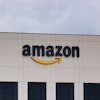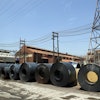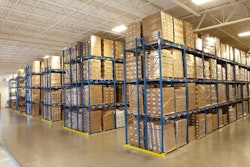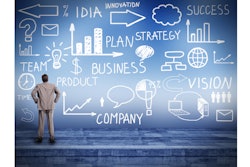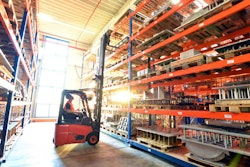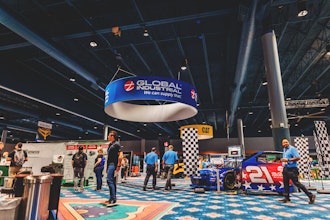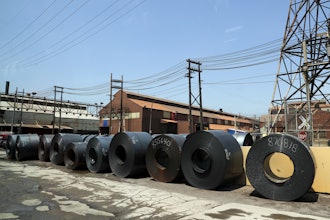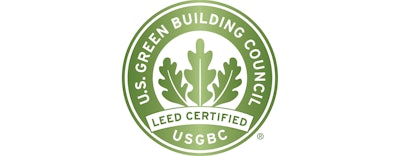
When it comes to business operations, distributors serving a variety of industries are typically most focused on improving speed and efficiencies. Their job is to get products from the manufacturer to the end customer in the quickest, most efficient manner possible.
However, in just about every industry today, distributors are also increasingly focused on becoming more sustainable. In fact, in some cases distributors are being required to take such steps by large end customers that are now focusing their attention on “greening” their entire supply chain.
So what steps can a distributor take to make its own facilities greener and more sustainable?
Before exploring this, we need to clarify what we mean by the words “sustainable” and “sustainability,” as their definitions have evolved over time. Today, sustainability refers to what is known as the three pillars of sustainability: social, environmental, and economic factors. These three pillars can also be equated to what is called the triple bottom line: people, planet, and profits.
Here we will focus on just one of these pillars — the planet, or environmental issues — and discuss ways distributors can reduce their carbon footprint, reduce water and fuel consumption, and even measure and monitor their use of natural resources.
If a distributor were in the process of building a new distribution center, that would be fortunate because the distributor could then take advantage of many new technologies that help make a facility greener and more sustainable. However, even with these technologies available, the most important thing to consider would be site selection. Because fuel consumption and the release of greenhouse gases are so closely intertwined, the closer the distribution center is to its network of customers or access to rail and other delivery systems, the more its carbon footprint can be reduced because less fuel will be necessary for the transportation of products and thus fewer greenhouse gases will be emitted.
While building a new center from scratch and finding the right site is the ideal situation, the reality is that many distributors that want to become greener and more sustainable will have to make changes to an existing structure. In order to do so, one of the first steps is to become familiar with LEED for Existing Buildings: Operations & Maintenance (LEED EB: O&M) certification.
We are not suggesting that distributors revamp their facilities in order to become LEED-certified; instead, we suggest that distributors use this information as a guide for what steps they can take and implement in an existing facility to become greener and more sustainable.
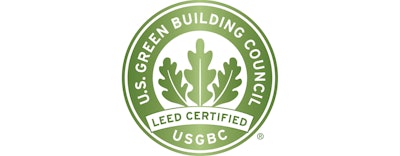
So what are some of the initiatives an existing distribution center can take? Using LEED EB: O&M as a guide, some of these would include the following:
- If a new roof is needed, make sure the roof is properly insulated with light-colored materials; this will reflect light and heat instead of absorbing it. Also consider installing vegetation on the roof; it provides additional insulation, absorbs carbon dioxide, and releases oxygen.
- Install skylights. Many older distribution centers were built totally dependent on electric lighting. Skylights and other forms of day lighting can help reduce the need for electric lighting.
- Make sure all lighting is low-wattage florescent or LED and minimize exterior lighting.
- Install quick open and close dock doors. This can help reduce HVAC needs. Make sure all fork lifts and delivery vehicles used in the distribution center are newer and designed to use fuel and electricity more efficiently.
- Invest in software programs and work with vendors to better schedule deliveries to and from the site; one of the biggest wastes of fuel is the result of trucks idling their engines while waiting for a dock to become available.
- Because water is now a key component of LEED certification, look into different ways to reduce water consumption—from replacing outdoor vegetation with native plants that typically consume less water to the installation of low-flow or no-flow restroom fixtures. These two areas are where most of the water is used in a typical distribution facility.
- Make reusing and recycling of all packaging materials a “working mantra.” It can lead to new ways to recycle materials.
- Select floor coverings, adhesives, and paint that emit low amounts of volatile organic compounds (VOCs).
Measure and Monitor
These are just some of the steps that distributors can take to help reduce their facilities’ carbon footprint. And what often happens once a sustainability program is put into action is that more opportunities for becoming greener are uncovered.
However, becoming greener and more sustainable requires distributors to monitor and measure their progress to make sure they are on track. In order to help with this, some distributors are turning to online “dashboard” systems. These systems are designed to help users record, monitor, and measure a number of metrics — from fuel consumption to water and energy use to even waste generation.
Usually the first step with these systems involves establishing a benchmark. With water or energy, this would require collecting two or more years of utility bills indicating amounts consumed and their related costs. In some cases, these numbers must be manually entered into the system, but it is possible they can be downloaded directly from the utility company.
From here it is just a matter of inputting updates and evaluating the results. Let’s say you have 20 male workers in the distribution center and another 20 or more male drivers visiting the center every day. In March, you decide to replace all the older urinals, which use 1 or more gallons of water per flush, with low-flow urinals that use about 0.5 gallons of water per flush or urinals that use no water at all.
After about three or four months of use, you turn to the dashboard to examine your center’s water reduction progress. Because a traditional urinal can use as much as 30,000 gallons of water annually, making this one change will likely produce dramatic results, which will be verified by the dashboard system.
You can then repeat this process for energy consumption, fuel, and so on. You can also use the dashboard’s results to prove to those end customers insisting that their supply chain be operated in a more sustainable manner that you are doing your part and taking the appropriate steps to meet this requirement. And in so doing, you are incorporating steps that help decrease your facilities’ environmental impact, reduce costs, and improve your bottom line.
 Stephen P. Ashkin, President of The Ashkin Group and Founder of the Green Cleaning Network
Stephen P. Ashkin, President of The Ashkin Group and Founder of the Green Cleaning NetworkStephen P. Ashkin is founder of the Green Cleaning Network, a not-for-profit organization dedicated to educating building owners and suppliers about Green Cleaning and president of The Ashkin Group, a consulting firm specializing in Greening the cleaning industry. He is considered the “father of Green Cleaning,” on the Board of the Green Sports Alliance, and has been inducted into the International Green Industry Hall of Fame (IGIHOF).


